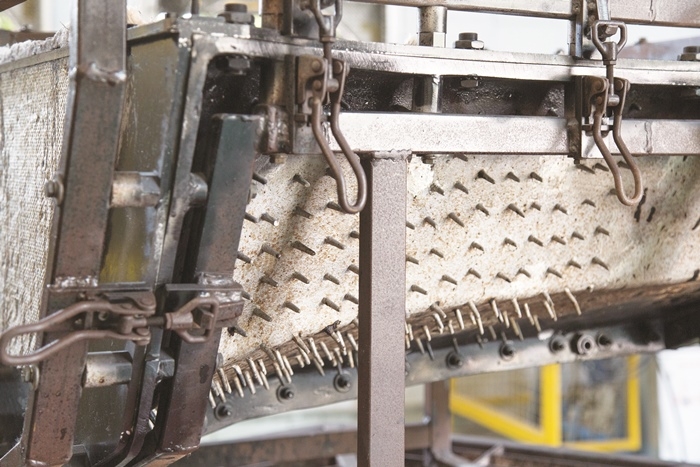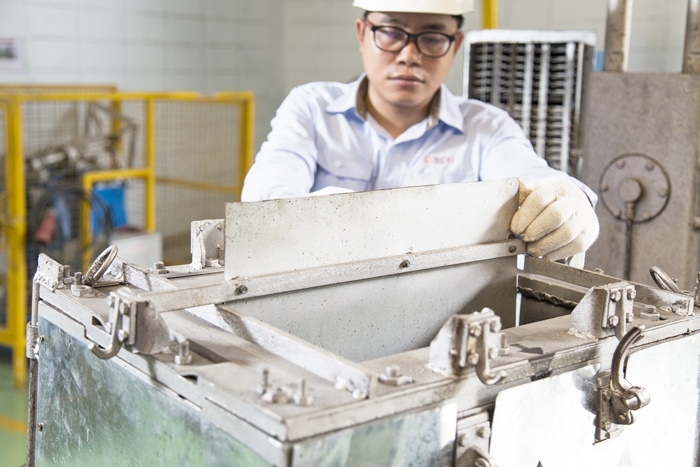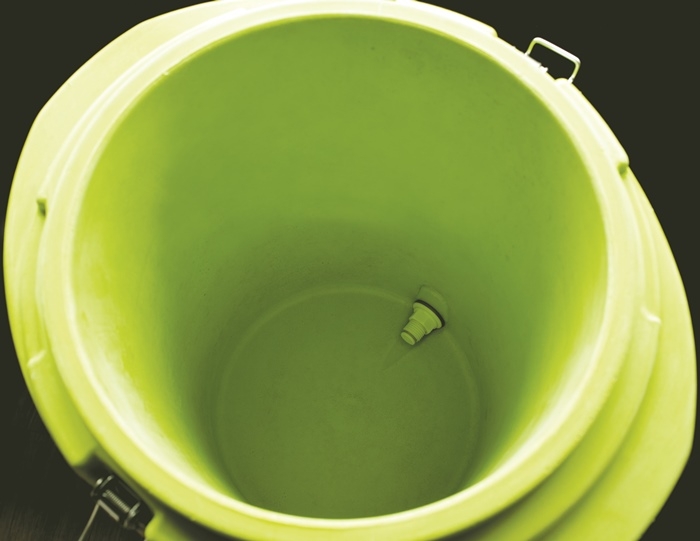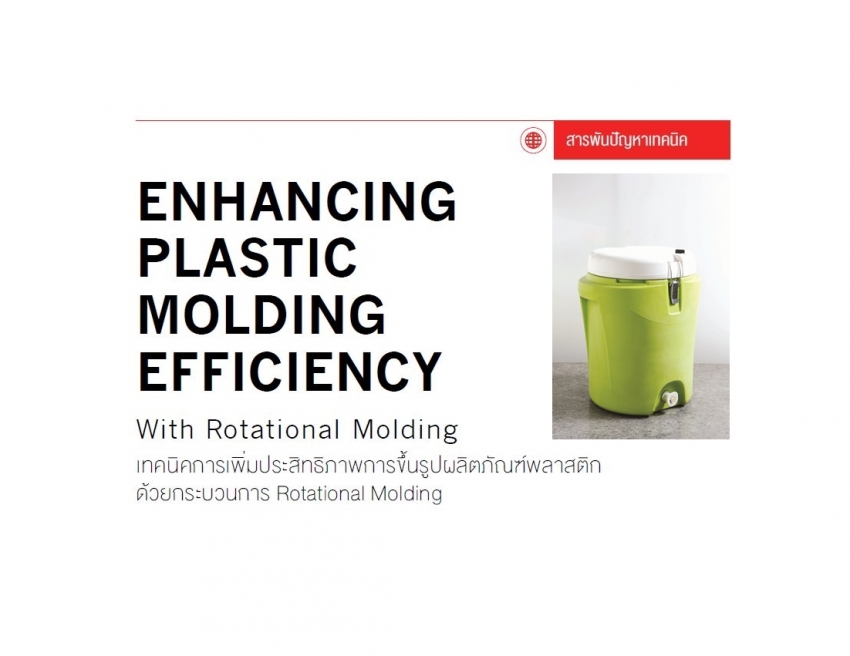There are various plastics molding processes available in the industry. Each has its own advantages and disadvantages in terms of process capability, output, and investment cost. Rotational molding or rotomolding is one popular process to make water tanks, cooler boxes, and septic tanks. Its main strength is its suitability to produce large hollow parts with complex shape and its lower mold costs. Due to its long cycle time, rotomolding is usually selected for products with production runs of 100 – 10,000 parts per year. Like any other processes, there are certain challenges that rotomolders have to face. One of them is the manufacturing of deep-bottom parts (deeper than 30 cm.), which usually is unintentionally thinner on the bottom wall.
To address this issue, Technical Service & Development (TS&D) of SCG Chemicals has done research to find solutions to help customers to improve their products quality. More heat transfer to this area is needed.
To increase the bottom’s wall thickness air flow, There are three techniques that can be applied.
- Air Flow Deflection, which utilize a metal sheet; such as 1-2 mm. tin sheet, is installed in the middle of the mold to increase air circulation.
- Using compressed air and venturi (i.e. air mover) to draw hot air into cold spot inside the mold.
- Increase heat transfer area by using heat pins or spikes on the outer mold surface so that the cold area can absorb more heat than those surface without heat pins. Heat pins are usually made at the time of mold casting.
Increasing wall thickness in thin area is usually not enough but also decreasing wall thickness in the neighboring area that is too thick is also necessary. To decrease wall thickness, heat must be reduced. Two techniques can be applied here.
- place a sheet (1-2 mm.) in front of the thin metal hot surface to deflect incoming hot air.
- apply fiberglass insulation on the top of the mold surface.
All the techniques suggested here have been introduced to cooler boxes manufacturers. These techniques that SCG Chemicals’ TS&D team has introduced to icebox manufacturers have not only helped resolve issues in the production process but also greatly enhanced the efficiency of rotational molding. This initiative reflects our philosophy that our clients’ problems are our problems, however small or large they might be. SCG Chemicals is equipped with highly proficient teams who are ready to listen and provide assistance to the best of their ability.
Remark: These techniques yield the best result for molding in ovens.
For further information please contact: E-Mail: rotomoulding@scg.com or Tel: +66 2-586-4116
Click here to view plastics resin for Rotomolding








